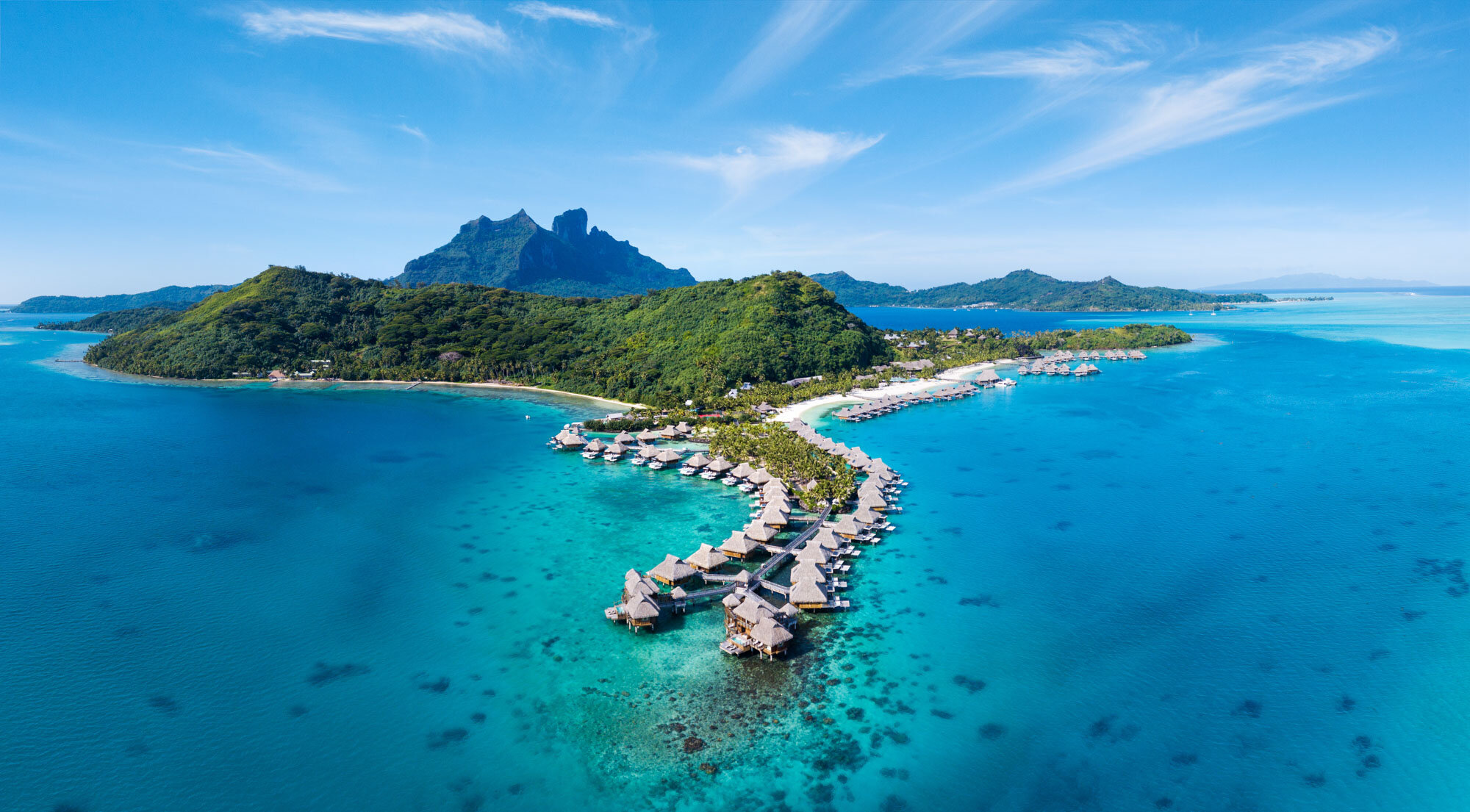
PROJECT OVERVIEW
Photo © Maya Santangelo
French Polynesia comprises 118 islands and atolls grouped into five archipelagos that extend over a territory of more than 5 million square km in the South Pacific. In this region, manta rays are observed in all five archipelagos, with both Mobula alfredi and Mobula birostris found in the Marquesas Islands and Society Islands. Manta rays are important cultural and socio-economic assets in French Polynesia, with ecotourism contributing over US$3.6 million annually to the local economy. Yet very little is known about the ecology and status of their population.
Led by Observatoire des Requins de Polynésie (ORP - Shark Observatory of French Polynesia, authorized by the Direction of the Environment of French Polynesia) and in collaboration with the Manta Trust, the French Polynesia Manta Project was established in 2015 to study the population of manta rays in French Polynesia. Using photo-identification, this citizen science program has allowed the collation of a valuable dataset of manta ray sightings over nearly two decades. The data collected so far has provided the first insights into the distribution patterns and population characteristics, as well as information about threats to manta rays in French Polynesia.
While manta rays are protected in French Polynesia by the Code for the Environment, they may face threats related to the region’s expanding tourism and coastal development, as already seen within the Society Islands. In contrast, the remote Marquesas Islands, located 1400km from the popular centre of Tahiti, present an important location to study these species in an environment away from major human impacts. Further, the Marquesas Islands are also one of few places in the world where both manta species are found. This project therefore offers a unique opportunity to provide the first insights of the sympatric relationship and habitat use patterns between these species.
French Polynesia holds the largest territorial waters in the world, with most islands remote and uninhabited. As such, we’ve only just begun to scratch the surface in exploring the manta rays of this region. Continuing with photo identification efforts, we are excited to lay the foundations for more comprehensive research in the future to understand the population dynamics, movement ecology and spatial connectivity of manta rays across all corners of this region. Integral to the success of this project is the involvement of local communities. Fostering collaboration with dive tourism operators, we hope to not only increase citizen science participation to facilitate long-term data collection, but also increase awareness and stewardship for manta rays and their habitats. Together, we will be better equipped to support effective conservation for these globally vulnerable species.
PROJECT GOALs
To better understand the population dynamics, ecology, and threats to manta rays in French Polynesia and the wider South Pacific, to support effective local management strategies and inform global conservation measures.
Main Objectives
To achieve this goal, the French Polynesia Manta Project works to meet the following objectives:
(1) Describe and monitor the population status and demographics of manta rays in French Polynesia through an ongoing photo-ID database;
(2) Assess the connectivity of manta rays within French Polynesia to better understand if different archipelagos host distinct populations;
(3) Study the movement ecology and habitat use of manta rays within the region, identifying key aggregation sites and investigate drivers of occurrences;
(4) Explore the sympatric relationship between reef and oceanic manta rays in French Polynesia;
(5) Provide reliable data to support local government management strategies and conservation efforts for manta rays and their habitats;
(6) Develop collaborative relationships with local communities, dive operators and international visitors to educate about marine species and ecosystems, follow responsible tourism practices, and encourage citizen science data collection.

Project Leader - Nicolas Buray
Nicolas has been in charge of the ORP since its creation in 2011. A passionate diver, he dedicates his life to underwater life, especially sharks. Originally from Normandy, Nicolas settled in Moorea where he completed a diploma on the behaviour of lemon sharks. Today, he is manager of a dive centre and is also an underwater cameraman.
Project Leader - Cécile Berthe
Cécile joined the ORP in 2015 to help Nicolas in the coordination of the French Polynesia Manta Project. She completed a diploma on eagle rays in French Polynesia. Her passion is to observe nature and to share her discoveries with others. She organizes exhibitions, contests, workshops with marine scientists and general audience to increase the impact of marine science.
Project Manager (Society Islands) - Alice Carpentier
Project Manager (Marquesas Islands and Tuamotu Islands) - Maya Santangelo

Key Achievements
Established the first nation-wide photo-ID database in French Polynesia, with more than 400 individual manta rays across 3 of the region’s archipelagos.
More than doubled the number of identified individuals in the Marquesas Islands since 2018.
Confirmed the presence of Mobula birostris in the Society Islands.
Published the first review of manta data in French Polynesia.
Bora BorA
Bora Bora, also known as “the Pearl of the Pacific”, is a small island located in the Society Archipelago, 255km north-east of Tahiti. It has become a very popular tourist destination for its luxury resorts and is renowned for its turquoise lagoon, protected by a wide coral reef. Bora Bora’s lagoon and reefs are home to a multitude of marine species including some of the most emblematic species of the world such as sea turtles, sharks, rays, marine mammals and of course, manta rays.
Manta rays visit the lagoon daily to get cleaned by cleaner fish on cleaning stations located around the island. So far, the French Polynesia Manta Project has identified 137 different reef manta rays in Bora Bora. The Bora Bora database includes photos from the Manta Polynesia Research & Protect project conducted from 2000-2010 and financed by the Municipality of Bora Bora, which highlights a strong residency of manta rays to Bora Bora’s cleaning stations, and also revealed movements between Bora Bora and surrounding islands.
Project leader: Alice Carpentier
As a marine biologist and running with a passion for the oceans, Alice is committed to helping endangered species conservation through research and education. She was introduced to the ORP’s actions and the French Polynesia Manta Project while working for a non-profit organization in Moorea, and became more and more curious about the local manta ray population. She joined the project in 2017 to help to analyze the data collected on manta rays in the region and got hooked to manta rays conservation since.
Project manager: Virginie Poly
Virgine was born and raised in France, in La Rochelle, near the ocean. She fell in love with sea turtle conservation while working for a sea turtle rescue centre in Greece during her Bachelor in Biology. Afterwards, she obtained an International Master Degree in Applied Ecology and moved to French Polynesia in 2016 to work as a sea turtle biologist during nesting and hatchling season. Then, she worked as a naturalist guide for almost 4 years with a luxurious and ecological resort and started to be more and more curious about the few manta rays encountered in the lagoon. She was finally lucky to join The Manta Trust in 2022 and study the local manta rays population of the Society and the Tuamotus Islands.

partners in FRENCH POLYNESIA
Conrad Bora Bora Nui has supported the French Polynesia Manta Project through a partnership established in 2021. The resort provides the team with logistical and financial support to achieve our conservation goals in the region. With a cleaning station virtually on their front doorstep, the Conrad Bora Bora Nui provides a perfect location for the team to monitor and research the manta ray population. Conrad Bora Bora Nui has sustainability at the front of its strategy and being able to offer educational snorkelling, diving, and kids club activities with the Manta Trust only helps to elevate their guest’s experience whilst supporting our research and conservation objectives.
Photos from the field



























